Samsung Galaxy S6 Edge+ vs iPhone 6 Plus: How do they compare?
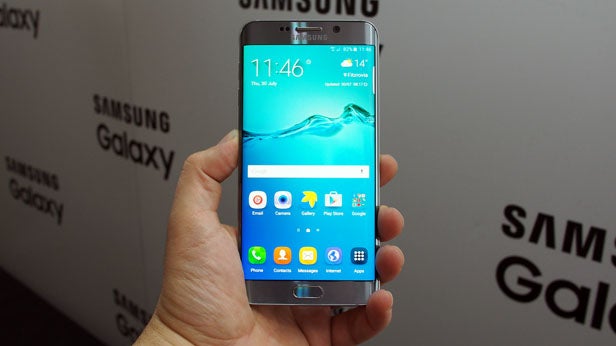
Galaxy S6 Edge Plus+ or 6 Plus? We check the specs to see how Samsung’s latest phablet will compete with Apple’s big phone
Rumours of an XL version of Samsung’s best Galaxy phone ever have been circulating for a while, and now the Korean company has finally made the device official.
What we weren’t expecting was for the Galaxy S6 Edge+ to be the only phablet from Samsung to have an official release in the UK. That’s right, the Note 5 will, initially at least, only be available in the US and Korea.
So, with that in mind, it looks like Samsung’s competitor to the iPhone 6 Plus will be the Galaxy S6 Edge+. Can it out-muscle Cupertino’s super-sized iPhone? Let’s take a closer look.
Design – Curves in all the right places
Flagship handsets generally follow the same design rules, and as a result they all tend to look fairly similar. Yes, the materials are different, individual flourishes are apparent, but that rectangular slab with a screen at its centre is the same whether you’re holding an HTC One M9 or an iPhone 6.
SEE ALSO: Note 5 vs Note 4: What’s new?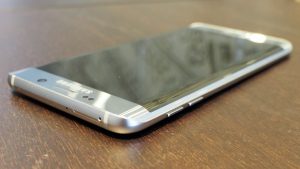
Samsung did something a little different with the Galaxy S6 Edge, curving both the sides of the display to create one of the slickest – and most difficult to hold – devices on the market.
There’s no doubt that the futuristic, almost concept-like design is visually striking. The S6 Edge+ is the same, but bigger, making it stand out even more. The S6 Edge+ is constructed using 7000-series aluminium alloy, bumped up from the 6013 used before, to create a much stronger device. This should help it avoid any “Bendgate” scandals that took the sheen off the iPhone 6 Plus launch.
Apple’s biggest phone yet was also its least visually appealing, mostly because of the ugly antenna bands that snaked their way over the aluminium rear of the phone. Many also fussed about the protruding camera lens, although this didn’t really bother us.
We have some reservations about how the S6 Edge+ will feel in the hand. The smaller version had such minuscule bezels that actually holding it for long periodwas sometimes tricky, We can’t imagine this will get any better with the increase in size.
Even though it boasts a bigger display, the S6 Edge+ is smaller in every area than the iPhone 6 Plus. Samsung’s device comes in at 154.4 x 75.8 x 6.9mm, compared to 158.1 x 77.8 x 7.1mm of the Apple flagship.
The S6 Edge+ is also nearly 20g lighter than the 6 Plus, weighing 153g as opposed to 172g.
Related: iPhone 6S Plus
Screen – A big difference in resolution
Instead of completely redesigning the S6 Edge for the “+” release, Samsung has instead opted to go down the same route as Apple by offering pretty much the same phone in two screen sizes. With the S6 Edge+ the display is bumped up from 5.2 to 5.7in, which is 0.2in bigger than the iPhone 6 Plus.
Related: S6 Edge+ vs S6 Edge
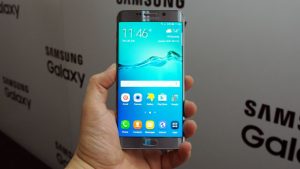
But, the S6 Edge+ doesn’t only have size in its favour; it also packs a far higher-resolution display than the 6 Plus. While the largest iPhone yet has a fantastic 1080p IPS panel with accurate colours and fantastic viewing angles, it just can’t match the the pixel-dense quad-HD display that graces the S6 Edge+. That’s the same as the regular-sized S6 and S6 Edge, but stretched over a larger surface area.
While we’ve only had a short amount of time with the S6 Edge+, it seems it hasn’t suffered any loss in detail moving to a larger screen.
Power – Big difference in RAM, but two powerful devices
Yes, yes, we know – the S6 Edge+ is aiming squarely at whatever Apple has up its sleeves with the iPhone 6s Plus, rather than the current flagship that’s about to reach its first birthday. But, since it looks like we’ll be waiting until an event on 9 September for the iPhone 6s, it’s the 6 Plus we’ll be taking a look at here.
We’ve used the iPhone 6 Plus heavily over the past year and the 64-bit, A8 chip powering the device keeps everything chugging along smoothly. Games, even the newest and most demanding titles, play without a hitch and we haven’t ever suffered any stuttering or poor performance.
Our only, albeit minor, quibble is the RAM situation. While Android devices have been upping the RAM for years, the iPhone 6 Plus is still stuck on 1GB. Compare that to the 4GB in the Galaxy S6 Edge+ – that’s as much as the computer this is being written on – and the difference is clear.
Yes, iOS is great at using the RAM sparingly, and the instances where the lack of it is noticeable are rare – basically it’s restricted to lots of reloading webpages and apps closing frequently. However, after using the iPad Air 2, the only mobile Apple device with 2GB, we’d appreciate Apple adding a bit more to the next iPhone.
Powering the S6 Edge+ is the same Exynos 7420 chip that impressed us so much in the S6 and S6 Edge. It’s one of the fastest mobile processors on the market, beating out Snapdragon’s 810 in benchmarking tests. Real-world use is ace too, so we have high expectations for Samsung’s newest phablet.
Features – Mobile payments, music upscaling and a better use for that Edge display
Both these flagships comes toting plenty of juicy extra features, notably speedy fingerprint scanners and support for mobile payments in the form of Samsung Pay and Apple Pay.
Neither have removable batteries or expansion card slots, so you’ll have to choose your base storage carefully. You can pick up the S6 Edge+ in 32GB and 64GB flavours, with the iPhone 6 Plus adding a completely inadequate 16GB and a larger 128GB option into the mix too.
SEE ALSO: Samsung Pay vs Apple Pay
On the software side of things Samsung has kitted the S6 Edge+ out with a UHQ upscaler to boost those lowly MP3 files to 24-bit versions.
That Edge portion of the display is also getting a bit of love this time around. You’ll be able to open apps directly from it, and send emojis to friends without unlocking the phone. They’ll also have to have an S6 Edge+, though.
We certainly feel that Samsung’s TouchWiz UI makes better use of the larger display than iOS, notably with the split-screen multi-tasking and floating-video window features. It feels like the design team has actually thought about how people can utilise the extra screen real-estate, rather than just blowing up the regular UI. Hopefully, some of the slick split-view features Apple announced for the iPad Air 2 is iOS 9 will filter down to the phones eventually.
Camera – The best two in the game
Until the release of the Samsung Galaxy S6, we’d have said hands-down that our favourite smartphone camera was the iPhone 6 Plus. it might only have 8 megapixels, but they’re bigger, focus pixels that let in more light. Plus, the addition of optical image stabilisation keeps blur to a minimum and night-time shots looking good.
The results are excellent, but it’s the ease of use and speed at which photos are taken that really set it apart.
Samsung has finally made an outstanding smartphone camera with the S6 and S6 Edge, and it’s using all the same tech to hopefully make the S6 Edge+ just as impressive.
SEE ALSO: 5 smartphone camera features pros will love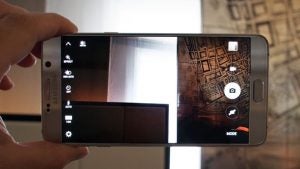
Specs-wise you’re looking at a 16-megapixel Sony Exmor sensor, with an f/1.9 aperture (the iPhone 6 Plus has an aperture of f/2.2) and the vital OIS. Night-time shots are great, well-lit pictures are packed with detail, and it’s quick to focus.
The S6 Edge+ has a few more tricks up its sleeve that could give it the edge over Apple’s competitor. These include UHD video recording – the 6 Plus manages just 1080p – and a bunch of live-streaming features.
The front-facing iSight camera on the iPhone 6 Plus is a mere 1.2 megapixels and doesn’t produce the finest-looking selfies. Results come out grainy and with a severe lack of detail. We can assume it’ll be soundly beaten by the 5-megapixel sensor on the S6 Edge+.
Battery – Extra features could give Samsung the lead
We’ve come to expect impressive battery life from the big-screen toting phones, with previous iterations of the Note line managing two full days of heavy use without needing a juice up. Even the iPhone 6 Plus, which comes from a line of devices that have notoriously suffered with a poor, manages to go more than a day without hitting the red.
SEE ALSO: Which smartphone has the best battery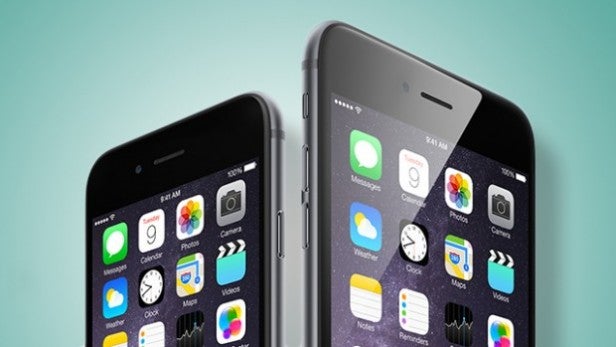
There isn’t much difference in specs when it comes to battery capacity. The S6 Edge+ has a 3,000mAh cell, whereas the iPhone 6 Plus has a slightly smaller 2,915mAh version. The S6 Edge disappointed us with its battery, so lets hope the “+” version rights those wrongs.
The lack of removable battery on the S6 Edge+ is somewhat offset by the QuickCharging tech and updated wireless charging that will power up your device 27 per cent than the S6 Edge. Apple still hasn’t added any sort of wireless charging to the iPhone, a shame in our eyes.
Early Verdict
The S6 Edge+ is certainly a looker, although we’ll need to spend a lot more time with it to figure out how well that curved display works on a phone of its size. We’re also skeptical about the move to a glass back – will it end up cracking like our S6?
Apple certainly made a splash with the iPhone 6 Plus, and while it’s a great phone, there are plenty of areas in which it just can’t match the Samsung. The lack of software optimisation to take advantage of the 5.5in display is a real misstep.
We’re also not sure how much the S6 Edge+ will retail for in the UK. You can pick up the regular S6 Edge for £579.99, while the iPhone 6 Plus starts at £619. We’d strongly expect the S6 Edge+ to cost more than both of these handsets, especially as the original cost of the S6 Edge was £695.
If you’re a fan of big phones, there’s going to be a lot to look forward to later this year.
The Samsung Galaxy S6 Edge+ will be available from September 4.


